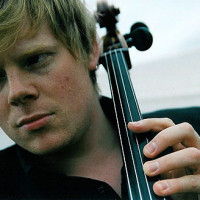
In Naldjorlak French composer Éliane Radigue takes us on a journey of microscopic proportions as a seemingly simple musical situation reminiscent of her earlier work for synthesizers unfolds. Naldjorlak is a work for unaccompanied cello and Radigue’s first composition for acoustic instruments and relies on a verbal communication between composer and performer. Cellist Charles Curtis, hones in on just one note for the duration of the piece, however, this premise which at first can strike the listener as simple is anything but.
What 91 year-old Radigue is asking of her listener is to be present and it might come as no great surprise that she has been a practicing Buddhist since the 1970's. To experience Radigue’s music you need to be able to follow sound to its silence, and that is a mental state. Naldjorlak is an invitation to deep listening. What do you hear when you stop in your tracks and begin truly listening as Charles Curtis drones on? Curtis is right at home in Radigue’s investigation of sound and his playing reminds us that without a great performer a great work of sound art does not exist. Had there been a score we could have mused that the work itself exists for the reader to experience through reading, but given the fact that composer and soloist have worked verbally it is more difficult to imagine this piece without its performer and so it’s difficult to fully know when we are hearing Radigue and when we hear Curtis.
Curtis brings Naldjorlak to life so subtly that it’s easy to think that he is doing nothing. It sounds deceptively simple at first but if you take the time to actually experience the pace of the droning you will notice that not only are the two versions offered on this release vastly different in character and expressivity. They aren’t really drones with its implicit monotony, rather they are microscopic worlds of constantly changing textures of sound, and it is the way Curtis so masterfully mediates Radigue’s ideas that makes these recordings from Los Angeles and Paris so captivating.
